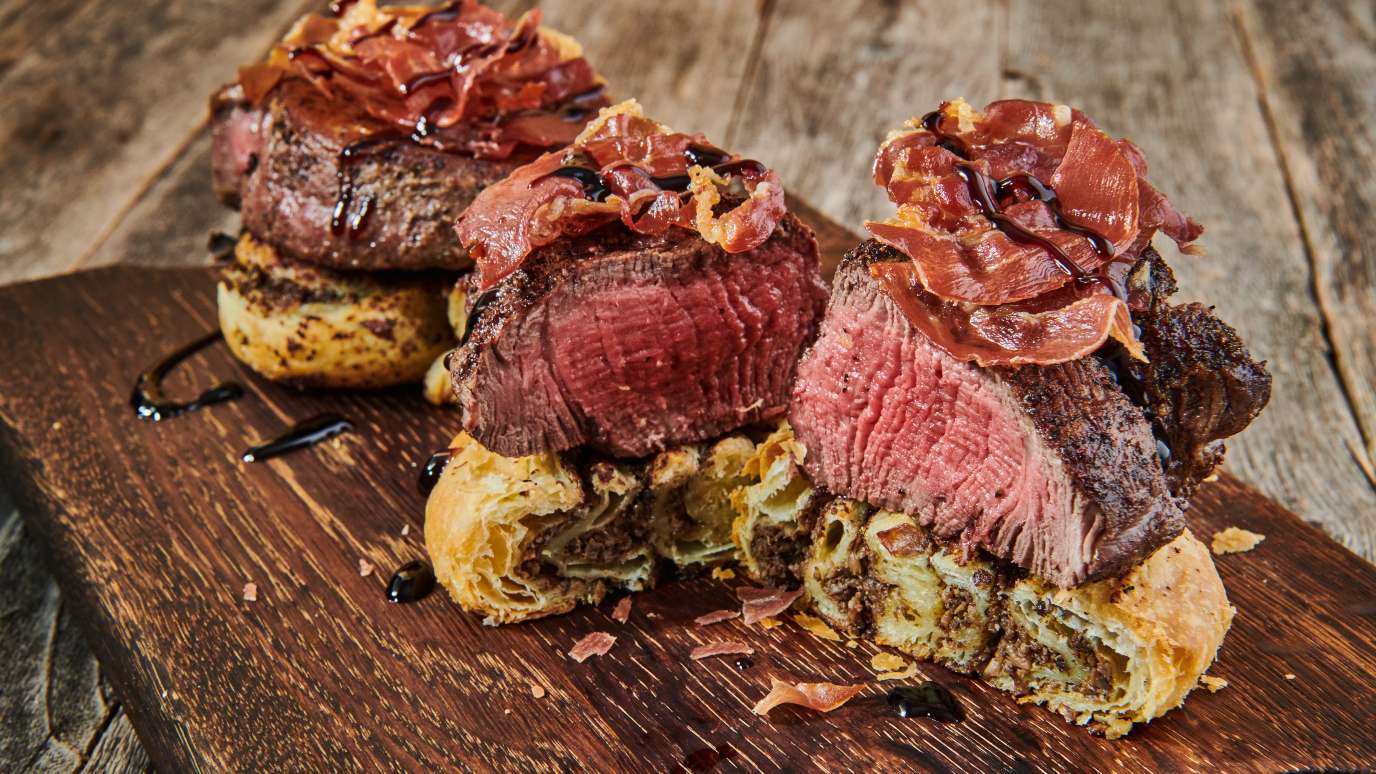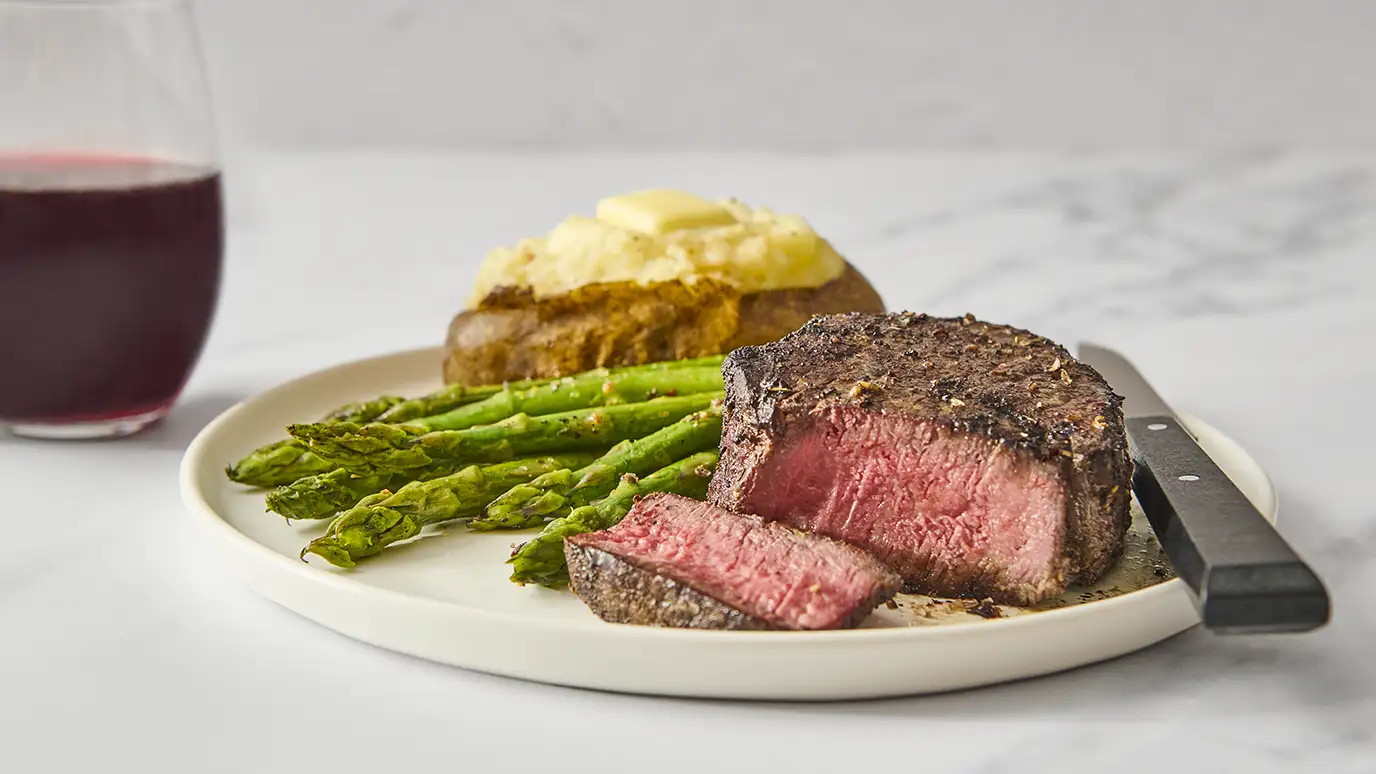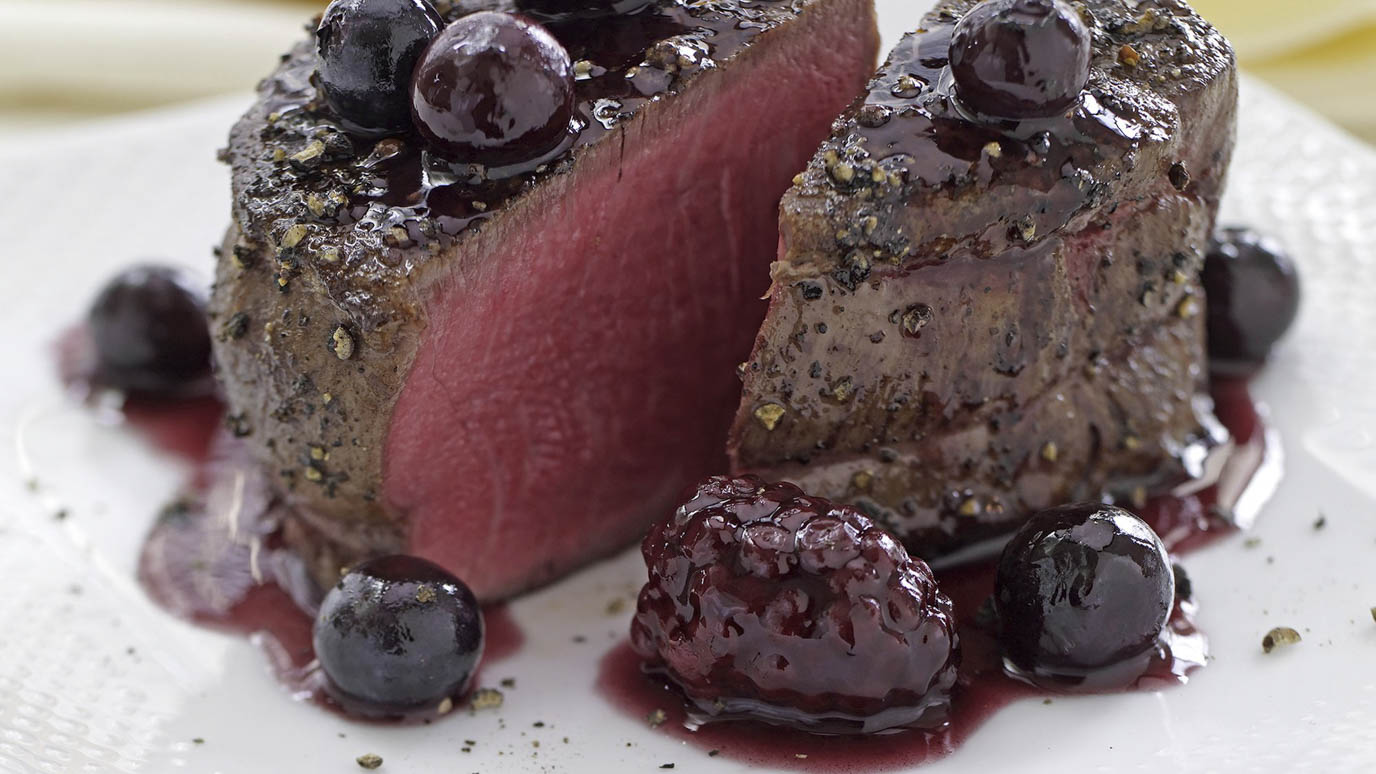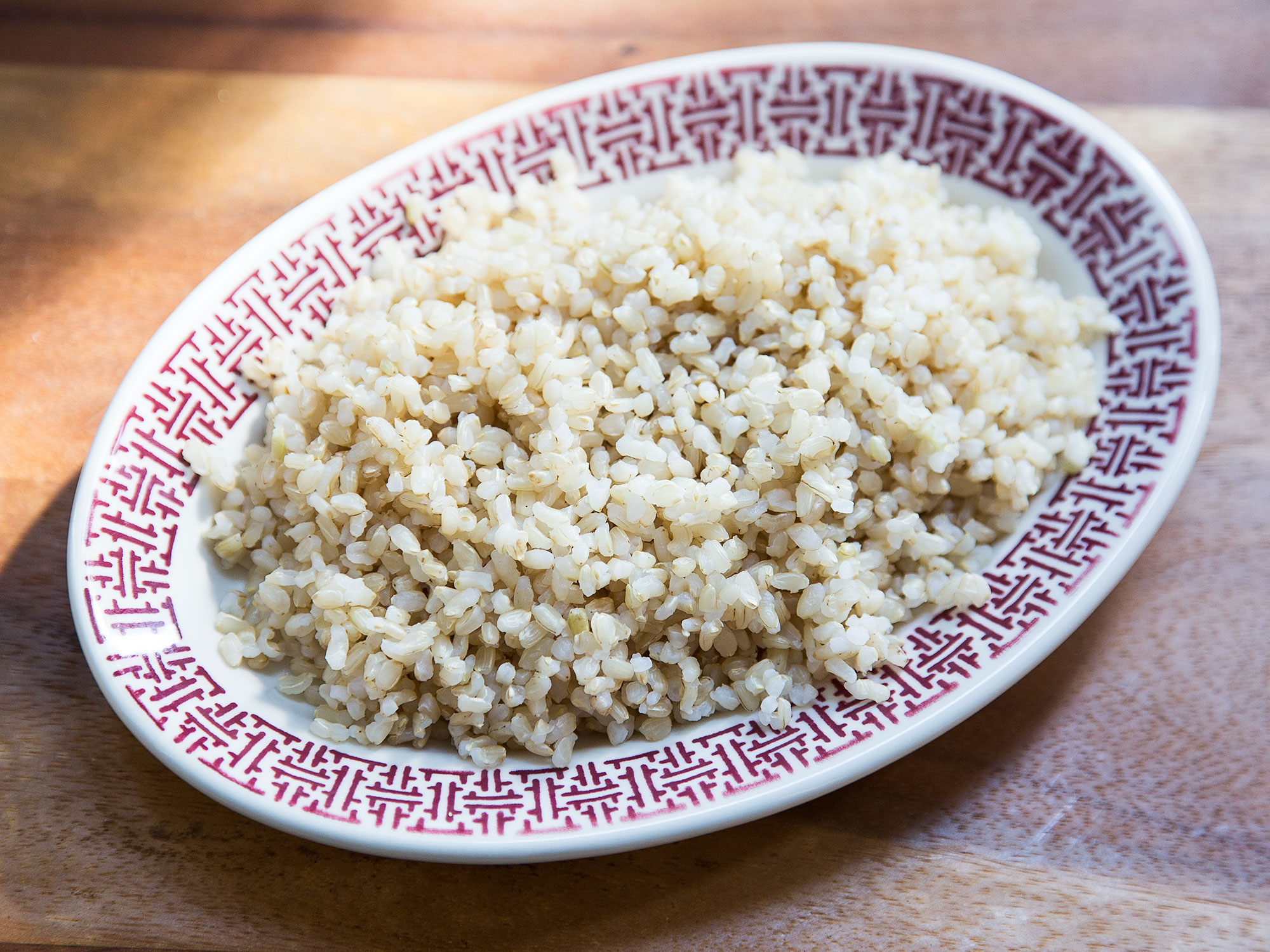Nothing gets an omnivore salivating like a perfectly cooked steak — and no steak says 'quality' quite so much as a filet mignon. This is the steak you serve up when you want to impress, so it's important to get it right. Here's a look at how to cook filet mignon to perfection, along with some filet mignon recipe examples to get you started.
The Basics of Filet Mignon
The tenderloin is the juiciest, tenderest cut of beef, and the filet mignon is the choicest part of that cut. It comes from the smaller end of the tenderloin, and it's a muscle that does very little work, which means that it's the tenderest steak of all. It's a small, thick steak with a fine-grained texture and a mild flavor.
A filet mignon is the most expensive cut of meat from a steer, which makes it extra important to ensure that you're investing in the right one. Looking for a cut that is bright red with fine marbling. This is especially important for a steak that is generally low in fat (and therefore lower in flavor than many other cuts). Opt for a thickness of at least 1.5 inches to ensure even cooking. If possible, choose USDA Prime or Choice grades for the best quality.
How to Season a Filet Mignon
The first part of the cooking is the seasoning. When it comes to filet mignon, which doesn't bring much of its own flavor to the plate, go nuts.
Aside from a delicious sprinkling of cracked pepper, one popular option for a filet mignon recipe is salting. Salting steak is hotly debated among home cooks, some of whom worry that it dries out the meat. We find that salting directly before frying prevents that drying while bringing out the flavor of the steak.
Alternatively, leaving the meat for at least an hour will allow it to reabsorb the moisture that initially wicks to its surface through salting, enabling it to gain more flavor. This effect gets better with time. Some chefs even leave their filet mignon overnight in the fridge after salting. Our Deconstructed Wellington recommends chilling steaks seasoned with McCormick Grill Mates® Max's All Purpose Seasoning for up to 24 hours.
Oven-Baked, Pan-Fried, or Grilled Filet Mignon?
You can cook a filet mignon in the oven, but because this meat is a relatively low fat one it cooks quickly, so you must be extra careful about controlling the cooking process. The easiest way to do that is under the grill, or even better, in the pan.
Pan frying allows you to sear the meat more easily, adding the flavor that this cut so sorely needs. It also lets you turn the steak regularly to ensure an even cooking and browning. Check out our filet mignon recipe for a guide to how to cook filet mignon in a pan.
How to Cook Filet Mignon to the Right Temperature
Knowing how to cook filet mignon isn't enough on its own; the other secret is knowing how long to cook it for. That comes down to how well you want it done. For a rare filet mignon, you need an internal temperature of around 120-124F.
At the other end of the scale is well done - llook for a temperature of 155-164F. We prefer medium-rare, at around 130-135F. That requires around 12 minutes, but your time will vary based on the steak's thickness, so keep that meat thermometer handy.
Time to Rest
Whichever approach you take to cooking your filet mignon, be sure to let the steak rest for a few minutes after it's done. This will help to redistribute the juices, which tend to rush to the center when cooking. This in turn increases the flavor and tenderness of the meat, while ensuring an even distribution of heat throughout. Then, when slicing it, do so across the grain. The lines that you see running through the meat are the muscle fibers. Cut through those, rather than in line with them. It shortens them and creates a more tender bite.
Serving Ideas
How should you serve your filet mignon recipe? Some folks wrap them in bacon when cooking to impart a smoky flavor. One of our favorite methods is to serve it up with a flavorful sauce. Do justice to this expensive cut of steak by cooking this Filet Mignon with Blackberry Sauce.
Unlike a ribeye or a strip, filet mignon is generally a small cut (although they can be as thick as you like). Consequently, we don't expect you'll have any leftovers - especially if you follow this guide and cook it to perfection. It's the perfect steak for a special occasion, whether it's a Valentines dinner or a birthday celebration.
Filet Mignon Side Dishes
Don't forget some stunning sides to complement your filet mignon. Here are some ideas.









